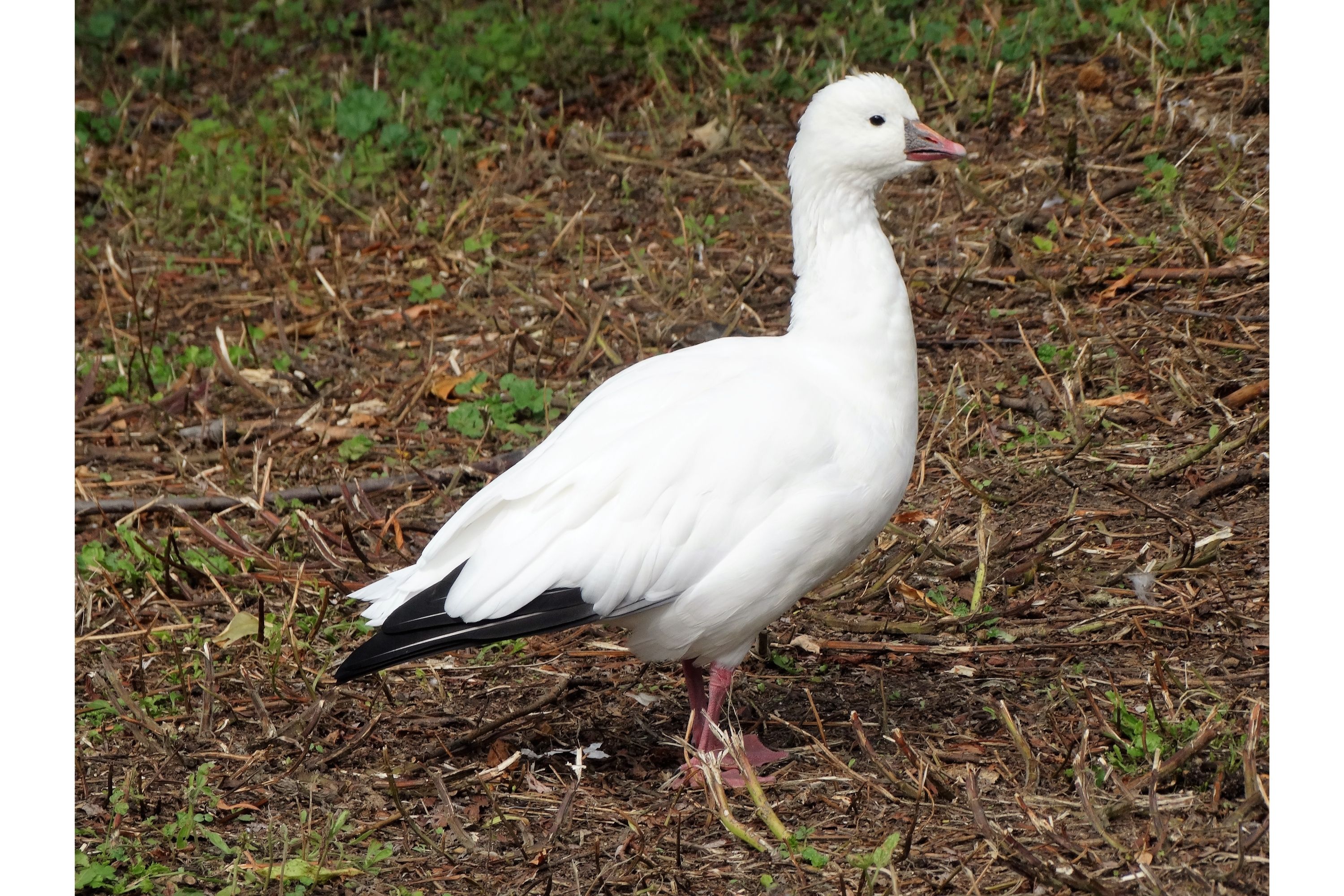Ross's goose
(Chen rossii)

Description
The Ross's goose (Anser rossii) is a white goose with black wingtips and a relatively short neck. It is the smallest of the three "white geese" that breed in North America. It is similar in appearance to a white-phase snow goose, but about 40% smaller. Other differences from the snow goose are that the bill is smaller in proportion to its body and lacks "black lips". The dark phase is extremely rare. The Ross's goose is named in honor of Bernard R. Ross, who was associated with the Hudson's Bay Company in Canada's Northwest Territories. Members of the Hudson's Bay Company were the first Europeans to discover the arctic nesting grounds of Ross's geese in 1940. The first recognizable description of Ross's geese, under the name "horned wavey", was given by explorer Samuel Hearne eighty years before John Cassin named it after Ross Ross's goose have a rounded head above a short neck. The bill is short and triangular, and has a bluish base with warty structures that increase in prominence with age. Adults are identified by all-white secondary feathers, while juveniles' will be dark centered. Females average 6% smaller than males. Legs will begin as olive gray on goslings and turn deep red as they mature. There is no geographic variation or identified subspecies. Related species include other Anser geese, particularly the lesser snow goose, where the two mtDNA lineages imply frequent hybridization.Two hypotheses about the evolution of Ross's goose are that they arose from a population of snow geese that were isolated by glacial advance or in a refugium that remained ice free. Landscape in the central Arctic is dominated by flat plains with some rock outcrops and drumlins, wet meadows, and marshy tundra. Vegetation includes patches of dwarf birch, willow, grasses, sedges, and low-growing vascular plants including crowberry, lapland rosebay, and lousewort.Large colonies of nesting birds can cause extensive damage to plants by overgrazing. Ross's geese form large nesting colonies on islands in shallow lakes and adjacent mainland, building nests on the ground made of twigs, leaves, grass, moss, and down. Females lay an average of 4 eggs per clutch and incubate the nest for 21–23 days. These birds migrate from their Canadian nesting grounds by mid-October, probably in response to limited food before freezing temperatures set in, and begin their return in mid-April to May.
Taxonomic tree:







